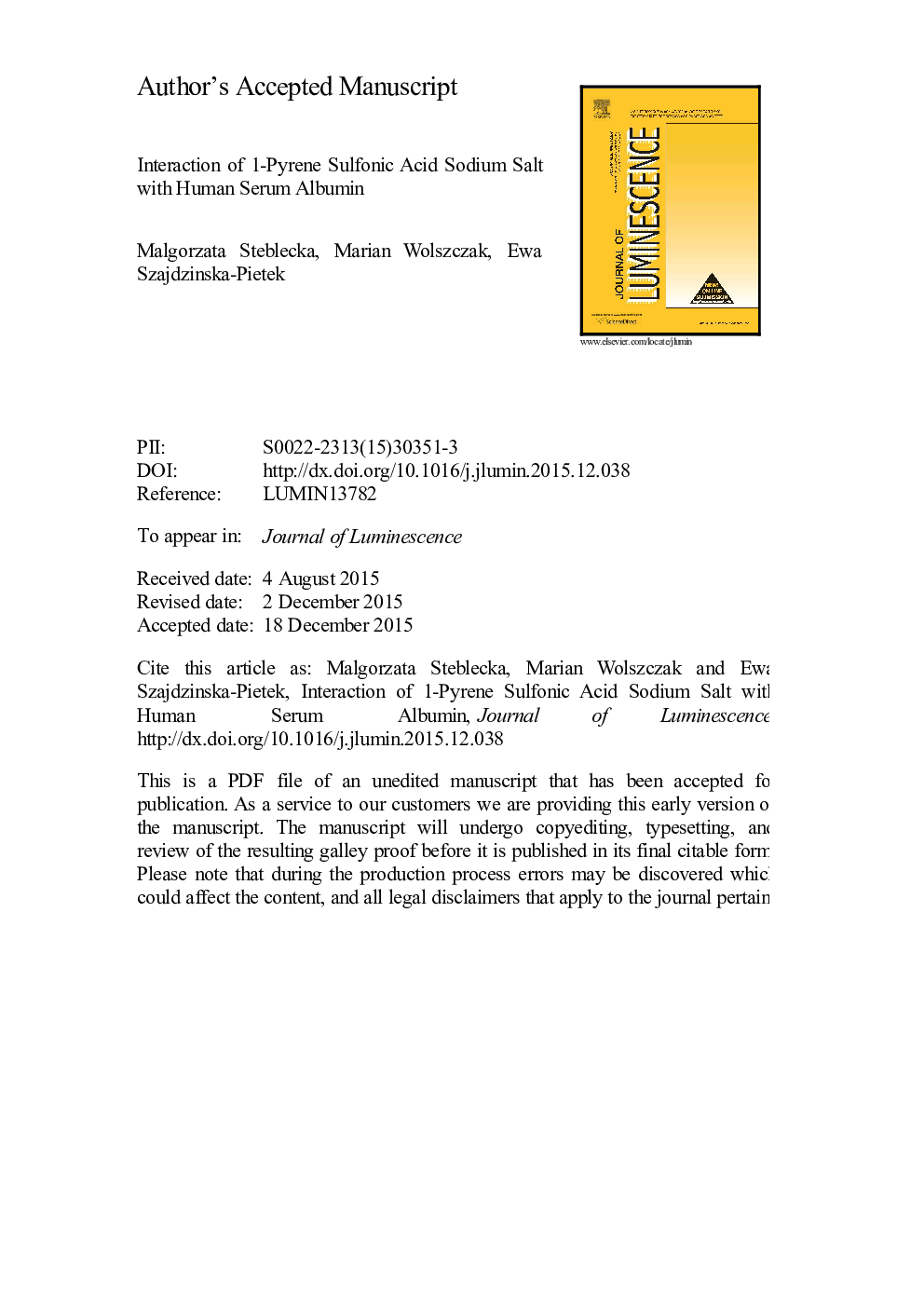| Article ID | Journal | Published Year | Pages | File Type |
|---|---|---|---|---|
| 5398653 | Journal of Luminescence | 2016 | 25 Pages |
Abstract
Steady state and time-resolved techniques of optical spectroscopy were applied to examine the interaction between 1-pyrene sulfonic acid (PSA) sodium salt and human serum albumin (HSA). This work is directed towards finding a convenient fluorescent marker (or blocker) of hydrophobic binding sites within the protein, to be used in the in vitro studies of HSAâdrug systems. The observed variation of PSA absorbance with HSA concentration was interpreted in terms of two possible probe/protein binding modes with the binding constants Kb,1=(6.5±0.6)â106 Mâ1 (a specific receptor site), and Kb,2=(3.8±0.8)â105 Mâ1 (non-specific binding of up to three probe molecules). The PSA fluorescence is quenched by the albumin (via both static and dynamic mechanisms), and also the HSA-Trp214 fluorescence is quenched by PSA (via resonance energy transfer). These results indicate that the probe is bound in the domain IIA of the secondary HSA structure. At lower [PSA]/[HSA] ratios the PSA fluorescence lifetime is longer than that in homogeneous buffer solutions (not containing HSA). Therefore, we conclude that lower affinity binding sites are distant from the tryptophan residue. This is confirmed by complementary studies on the transient T-T absorbance and on luminescence of the photosensitized singlet oxygen.
Keywords
Related Topics
Physical Sciences and Engineering
Chemistry
Physical and Theoretical Chemistry
Authors
Malgorzata Steblecka, Marian Wolszczak, Ewa Szajdzinska-Pietek,
